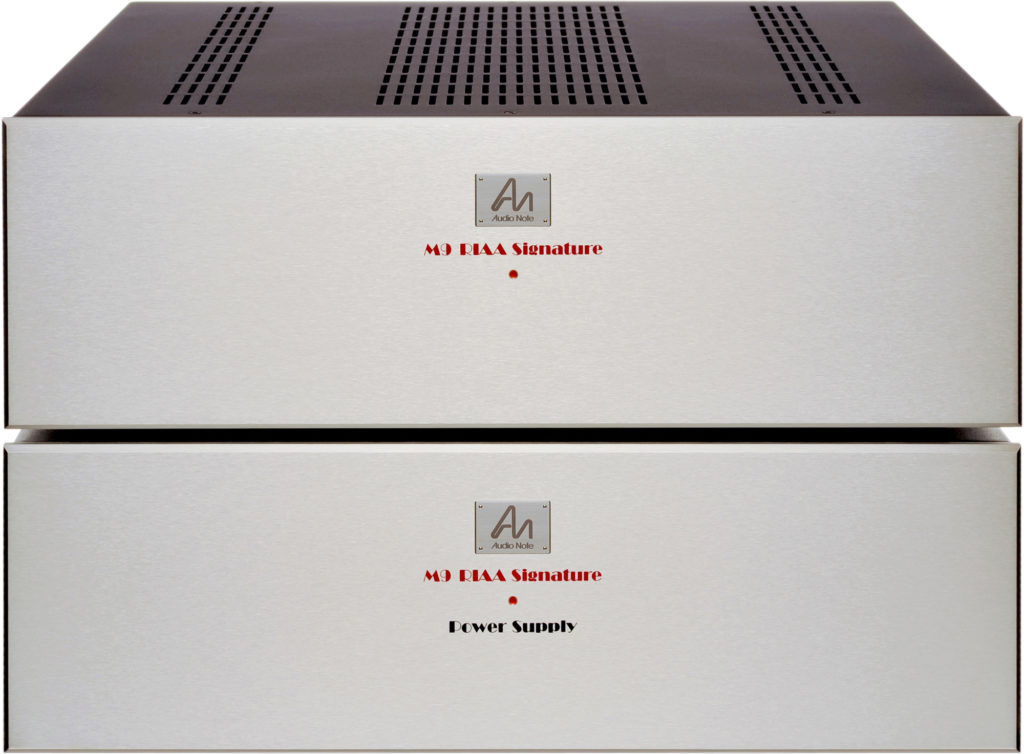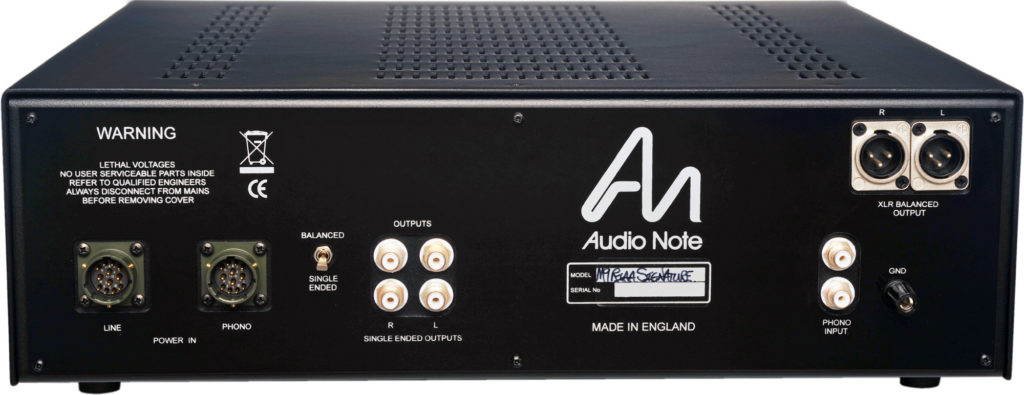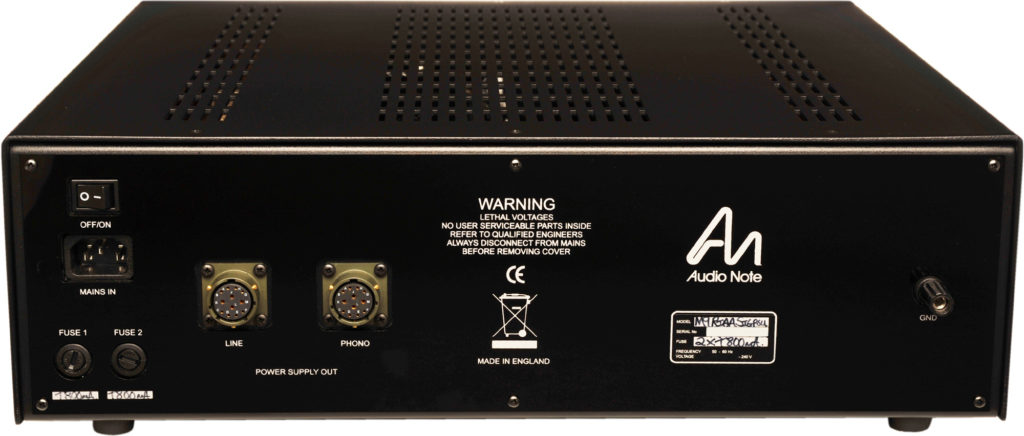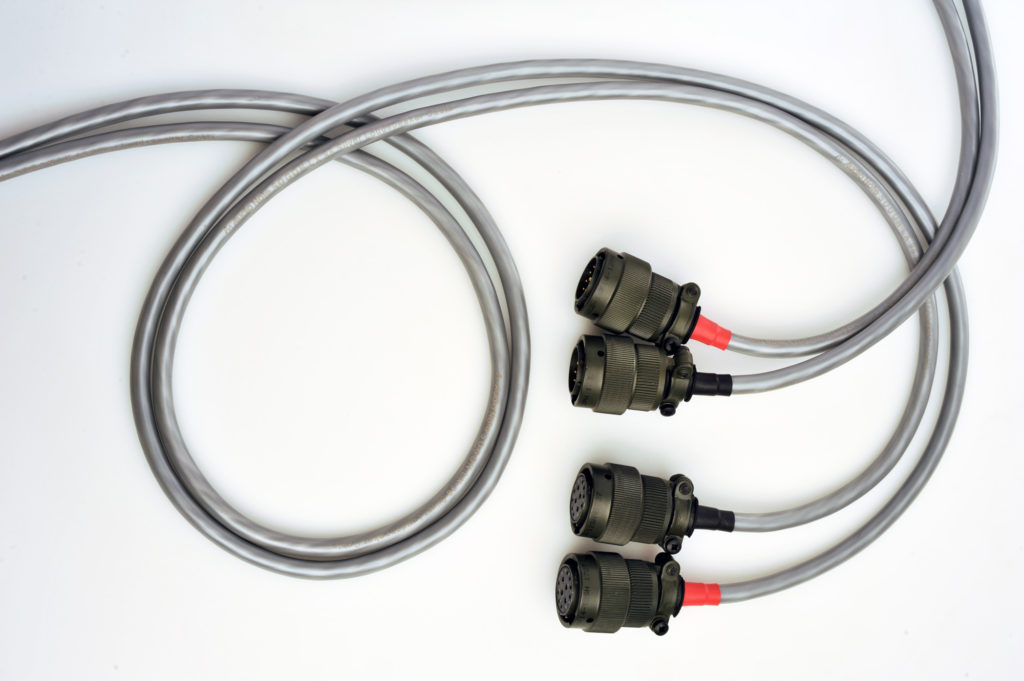Introduction
About six months after I reviewed and subsequently purchased the Audio Note M10 Special Edition Line Stage, AN asked whether I had any interest in reviewing their top of the line phono stage which, in their opinion, represents an ideal match to their M10 SE line stage. In their words, no expense had been spared in trying to get the most natural sound. The price was quoted at 110,000 British pounds sterling (approximately the same price as a Porsche 911 Carrera S). In addition, they would include their S9 step-up transformer (18,500 British pounds sterling) wound to match the specifications of my Lyra Atlas SL moving coil cartridge.
In due time, a pallet containing multiple boxes arrived at my front door. Given that my reference Ypsilon phono stage arrived in a single crate, it was with some trepidation that I began the unpacking process, fearing multiple power supplies and multiple chassis, which I was pretty sure my existing Finite Elemente equipment stand would not comfortably accommodate. As it later became apparent, the actual phono stage consists of two chassis, an active audio stage about the same size as the M10 control unit and a remote power stage again similar in size and weight to one of the two power supplies for the M10. Both chassis had silver front panels, neither contained any front panel controls; however, there was an ON/OFF switch on the rear of the power supply above the IEC connector. The units were supplied with two three-meter SOGON silver umbilical cables and an Isis copper power cord. The importer, Audio Federation, was kind enough to also provide a SOOTTO silver power cord.
Technology/design philosophy
AN specifically engineers its equipment for sonic performance rather than technical specification. The M9 RIAA Signature fulfills all AN Level 5 design criteria:
Pure Class A operation
Zero negative feedback
Single ended circuit topology
Valve rectification
Use of only the highest quality materials and components
In an effort to preserve the purity of the incoming signal and retain the musicality of the original performance, complexity of the circuit is kept to a minimum. To achieve this goal, the M9 Signature phono stage uses a single ended, zero feedback topology. They have found this to be the most linear design possible using pure Class A valve operation and removing the need for a phase splitter, which introduces unnecessary crossover distortion. The circuits are designed to minimize non-harmonic and time base anomalies, rather than producing vanishingly small harmonic or low intermodulation distortion measurements.
The M9 RIAA Signature phono stage uses two E80F pentode valves, one E80CC or E81CC double-triode valve, dependent on the required gain, and a 6463 double triode in the output stage. The internal phono section and output-driver section are independently powered by a dedicated 6X5 valve rectified power supply, based conceptually on the M10’s Galahad power supply, housed in a separate, external chassis. These power supplies also incorporate an ECL82 for voltage regulation and a 5651 as a voltage stabilizer. AN silver wiring, AN 2-watt tantalum resistors, Black gate capacitors and AN silver foil signal capacitors are used throughout the circuit, along with in-house designed and manufactured custom output transformers.
An original idea used in the M9’s RIAA equalization stage is to employ an inter-stage coupling transformer with a designed value of leakage inductance to create a ‘virtual’ electrical component. Since reactive components such as inductors and capacitors exhibit losses due to DC resistance, hysteresis and other energy storage effects such as dielectric absorption, the M9 uses a specially designed RIAA transformer applying the normally unwanted leakage inductance between primary and secondary as a component of the RIAA equalization. The equalization circuit utilizes select silver foil capacitors and resistors for its partial and crucial operation in the inductive domain.
Like most of AN’s higher-end preamps, DAC’s, and phono stages, the M9 delivers its output via an internal single-ended power amp, complete with output transformer, which here is a silver wound piece, cored with custom annealed 55% nickel-iron C-Cores. The transformer provides both single-ended and naturally balanced outputs.
Some set-up considerations
Initial listening with a variety of different power cords produced widely varying results. For my particular tastes, the best compromise was the Stage III Kraken although an argument can be made in favor of the AN power cords provided. All listening impressions were with the Kraken. Likewise, both chassis exhibited a certain sensitivity to isolation and greatly benefitted from being sited on Finite Elemente Cerabases.
In hopes of better isolating the contribution of each piece of the AN gear, only the Ypsilon phono stage was initially replaced with all other components being kept constant. In Part 2 of this article, the Ypsilon phono stage will be reinserted and the Ypsilon transformer replaced by the AN S9. Finally the combination of the AN M9 and S9 will be inserted.
Listening impressions, which follow, are indexed chronologically by recording:
Scriabin, Poems – this being a DG, you don’t really expect RCA Shady Dog sound; however, the sound is quite good much of the time. Soundstage is very wide. Imaging is a little fuzzier than with a Shady Dog or early Decca, but pretty much “there.” Beside that, it’s Scriabin . . .it’s supposed to be a hazy opium dream, right? With Abbado conducting Boston, we are getting a very accurate replica. The 1970’s multi-miking is somewhat apparent, but what a nice feathery touch to the strings in the quiet moments, and plenty of detail.
Gerhard, Don Quixote Dances (Argo) – strings are quite lush. Some moments seem a bit muddy but then you realize that you are hearing everything. There is good air around the instruments. Soundstage is wide and deep with good localization of instruments. Detail retrieval is good.
Britten, Sea Interludes (EMI Columbia SAX), Guillini – In this instance, the sound is so good that I can almost overlook the rather poor quality of the vinyl used in this pressing. There is not a hint of grain in the strings even when they get loud. There is a full, uninterrupted soundstage across the width of my room with the speakers almost completely disappearing. Image placement is precise. There is air around the instruments. In fact, the stage layout is remarkable – this is as good as it gets. For those of you who are film music buffs, you will recognize the rather shameless borrowing of this music by Jerry Goldsmith in The Blue Max.
Level 42, World Machine– One thing that I really like about the AN M9 RIAA is that even with a dense and thickly engineered mess that a record like World Machine is, I can find musical details that reward my attention. The rhythm keyboard behind the rather drab solo in the third cut for example had a most sensuous attack, like the early Fender Rhodes, that greatly tickles the ear. The bassist is a distinct hero on this record. He adopts different tones on each song. On the second cut he has a Jaco Pastorius sound and every note with its distinct burp is quite unmistakable. That comes from hearing all of the top of the tone.
- (Page 1 of 3)
- Next page →





I have their Io gold cartridge and can imagine how the phono stage must sound. But $150,000? Please.
I have enough experience of Audio Note UK’s products, so I can say that they certainly have an incredibly expensive product; but they also have much less expensive ones and customers can upgrade gradually from the entry level to the flagship and be able to hear the differences and improvements, which is a testament to their engineering abilities.